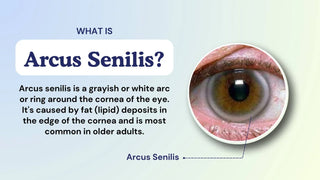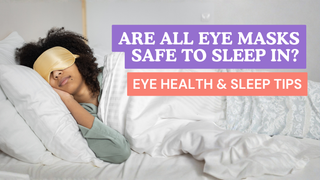Can Colored Contacts Cover Arcus Senilis? Understanding Your Options
Arcus senilis is a common age-related eye condition that many people seek to conceal for cosmetic reasons. One popular question that arises is whether colored contacts can effectively cover this condition. In this article, we'll explore the possibilities, limitations, and important considerations when using colored contacts to address arcus senilis.
Understanding Arcus Senilis
Who is Affected?
While arcus senilis is primarily associated with aging, it can affect people of various ages. It's more common in:
- Older adults, typically over 60
- Individuals with high cholesterol or triglyceride levels
- Those with a family history of the condition
Is it a Health Concern?
In most cases, arcus senilis is harmless and doesn't affect vision. However, when it appears in younger individuals, it may indicate high cholesterol levels, warranting a check-up with a healthcare provider.
Colored Contacts: An Overview
Types of Colored Contacts
There are several types of colored contacts available:
- Enhancement tints: These subtly enhance your natural eye color
- Opaque color tints: These can dramatically change your eye color
- Custom-made lenses: Designed for specific eye conditions or cosmetic needs.
How Colored Contacts Work
Colored contacts work by using a tinted layer to alter the appearance of your iris. Some lenses cover the entire iris, while others have a clear center to allow your natural eye color to show through.
Safety Considerations
When considering colored contacts for covering arcus senilis or any cosmetic purpose, safety should be your top priority.
Always:
- Obtain a valid prescription from an eye care professional
- Purchase lenses from reputable sources like EyeCandys
- Follow proper hygiene and care instructions
Can Colored Contacts Cover Arcus Senilis?
Effectiveness of Colored Contacts for Arcus Senilis
Colored contacts can potentially help mask the appearance of arcus senilis, but their effectiveness depends on several factors:
- The opacity of the lens
- The chosen color and design
- The severity of the arcus senilis
Factors Affecting Coverage
- Lens Design: Lenses with a more opaque design may provide better coverage
- Color Choice: Darker colors or those that contrast with your natural eye color might be more effective
- Fit and Positioning: Proper fitting is crucial for optimal coverage and comfort
Potential Limitations
While colored contacts can help, they may not completely conceal arcus senilis in all cases. The ring might still be visible at certain angles or under specific lighting conditions.
Choosing the Right Colored Contacts
Consulting with an Eye Care Professional
Before trying colored contacts to cover arcus senilis, consult with an optometrist or ophthalmologist. They can:
- Assess your eye health
- Provide a proper prescription
- Recommend suitable lens options
Selecting the Appropriate Color and Design
Consider these factors when choosing colored contacts:
- Your natural eye color
- The extent of coverage needed
- Your personal style preferences
Importance of Proper Fit and Prescription
A proper fit is crucial for both comfort and effectiveness. Ill-fitting lenses can cause discomfort, shift on the eye, and potentially lead to eye health issues.
Alternative Options for Addressing Arcus Senilis
Makeup Techniques
Some people use makeup techniques to minimize the appearance of arcus senilis:
- Concealer application
- Strategic use of eye shadow
Other Cosmetic Procedures
In some cases, individuals may consider more permanent solutions, though these should be approached with caution and only under professional medical guidance.
Embracing the Natural Appearance
Many choose to embrace arcus senilis as a natural part of aging, focusing on overall eye health rather than cosmetic concerns.
Safety and Care Tips for Using Colored Contacts
Proper Hygiene and Handling
Always wash your hands before handling your lenses and follow the cleaning instructions provided by your eye care professional.
Following Wear and Replacement Schedules
Adhere to the recommended wear time and replacement schedule for your specific type of lenses.
Regular Eye Check-ups
Schedule regular check-ups with your eye care professional to monitor your eye health and ensure your lenses continue to fit properly.
While colored contacts can potentially help cover arcus senilis, they're not a perfect solution for everyone. The effectiveness depends on various factors, and it's crucial to prioritize eye health and safety above cosmetic concerns. Always consult with an eye care professional before trying colored contacts, and consider exploring different options to find what works best for you.
Interested in trying colored contacts to address arcus senilis or for any other reason? Explore EyeCandys' range of safe, high-quality colored contacts. Our expert team can help you find the perfect pair to enhance your look while prioritizing your eye health. Contact us today to learn more about our colored contact lens options!








